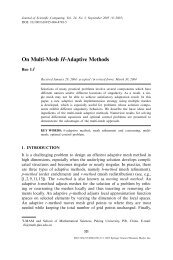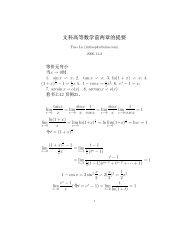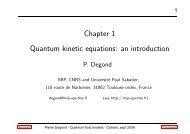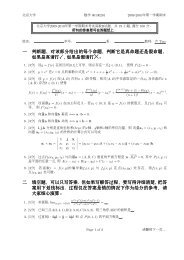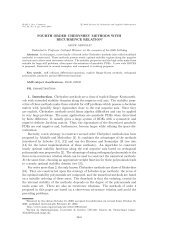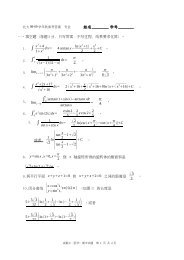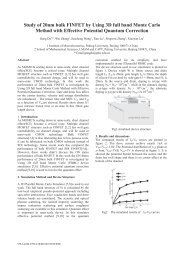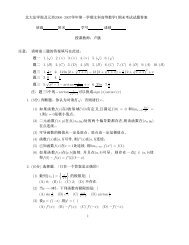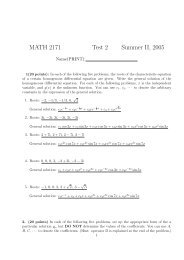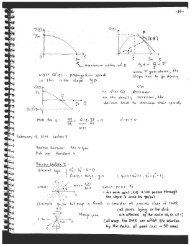Abstract
Abstract
Abstract
Create successful ePaper yourself
Turn your PDF publications into a flip-book with our unique Google optimized e-Paper software.
CHAPTER 4. THEORY 106<br />
we have at the k-th GMRES that<br />
rk2 ≤p(A)2r02.<br />
The authors in [10] use this fact and the spectrum of A to get a more useful bound<br />
on the norms of the residuals. In [10], the authors show that the convergence rate<br />
of GMRES is determined by how the eigenvalues of A are clustered in the complex<br />
plane; if the eigenvalues are closely clustered together, then GMRES will converge<br />
rapidly. The basic idea comes from using the resolvent integral representation of p(A),<br />
givenbythecomplexintegral<br />
p(A) = 1<br />
<br />
(zI − A)<br />
2πi Γ<br />
−1 p(z)dz<br />
Here, Γ is any curve in the complex plane that encloses all the eigenvalues of A.<br />
Therefore, we want to choose the polynomial p so that p is small near all the eigen-<br />
values of A. So if all the eigenvalues are tightly clustered, the degree of the chosen<br />
polynomial p can be smaller than if the eigenvalues were scattered throughout the<br />
complex plane. This means the number of GMRES iterations will be smaller for the<br />
clustered eigenvalue case.<br />
Now, returning to our specific problem, we have<br />
rk2<br />
≤p(A)2 ≤<br />
r02<br />
√ Lp(A)X,




